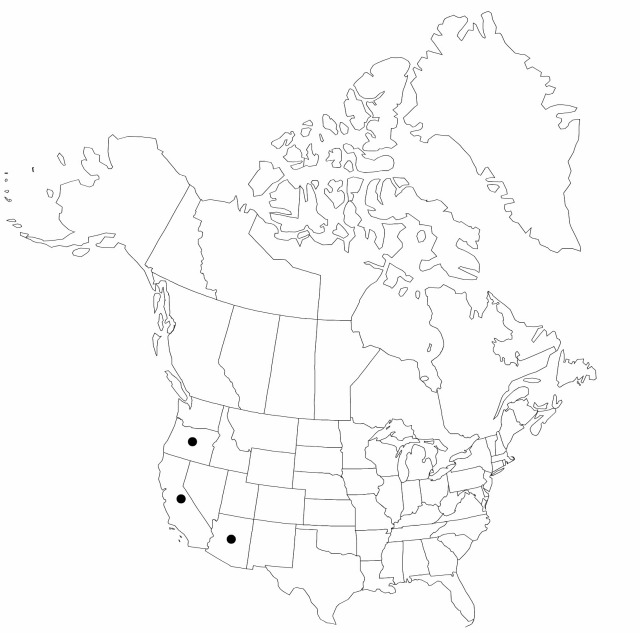Carex serratodens
in S. Watson, Bot. California 2: 245. 1880.
Plants cespitose. Culms 30–75 cm, distally scabrous. Leaves 2–4 mm wide. Inflorescences: proximal bracts shorter than or exceeding inflorescences; spikes erect, separate, short-pendunculate, short-oblong or elongate, 8–30 × 6–8 mm; lateral 2–4 spikes pistillate, of varying lengths, often much shorter than terminal spike; terminal spike gynecandrous (to as much as 2/3 staminate) or wholly staminate, staminate spikes sessile or on peduncules 5–10 mm. Pistillate scales light brown, margins hyaline, lanceolate, shorter or longer than and narrower or as broad as perigynia, midvein lighter colored than body, conspicuous, sometimes raised, prominent, sparsely spinulose, apex acute to mucronate, smooth or spinulose. Perigynia ascending, light brown, veined, broadly ovate, (2–)3–5 × 1.2–2 mm, apex gradually beaked, smooth or distal margins finely papillose; beak 0.5–1 mm, bidentate, smooth or serrulate, teeth spreading. Achenes nearly filling body of perigynia.
Phenology: Fruiting May–Jul.
Habitat: Moist places on open hillsides, adjacent to springs, seeps, or streams
Elevation: 100–1400 m
Distribution

Ariz., Calif., Oreg.
Discussion
Selected References
None.
